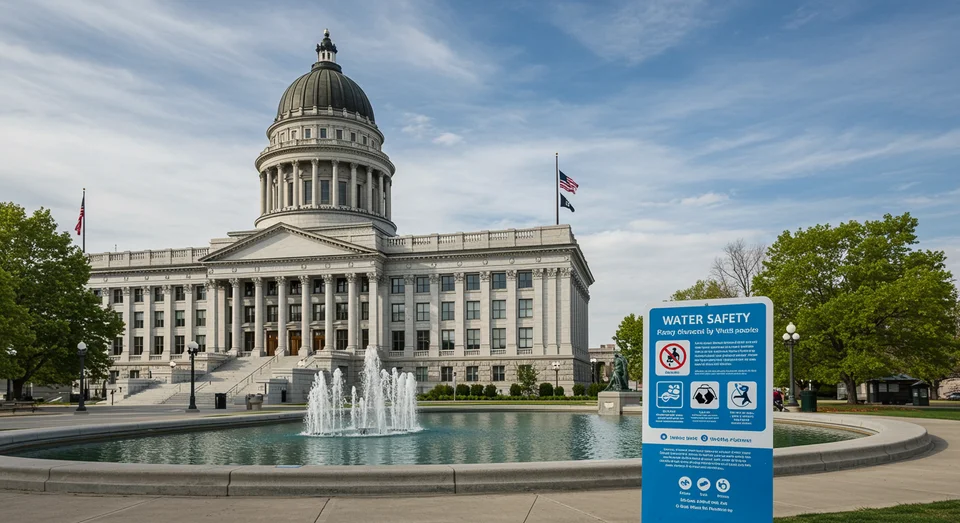Utah Becomes First State to Ban Fluoride as U.S. Reevaluates Water Safety Standards
362 views
A seismic shift in public health policy is underway as U.S. Health Secretary Robert F. Kennedy Jr. announced plans to challenge longstanding federal recommendations for fluoridation in community water systems. Citing emerging research that raises concerns about fluoride's potential links to neurotoxicity and developmental issues, Kennedy is forming a task force to reassess the practice. This announcement coincides with Utah's historic decision to become the first state to ban fluoride in public drinking water, a move signed into law by Republican Governor Spencer Cox. Meanwhile, the U.S. Environmental Protection Agency (EPA) has embarked on its own review of scientific findings related to fluoride exposure, signaling a potential recalibration of national water safety standards.

The Fluoride Debate: Public Health at a Crossroads
The controversy surrounding fluoride in drinking water is far from new, but recent developments have thrust the issue back into the spotlight. For decades, fluoride has been heralded as a cornerstone of dental health, credited with reducing cavities and strengthening enamel. The Centers for Disease Control and Prevention (CDC) has long recommended the addition of 0.7 milligrams of fluoride per liter to community water systems—a practice that currently affects nearly two-thirds of the U.S. population. But a growing body of research is challenging this orthodoxy, suggesting that fluoride may pose risks to human health, particularly at higher exposure levels.
A pivotal report from the National Toxicology Program has raised alarms about fluoride concentrations exceeding 1.5 milligrams per liter, linking such levels to potential neurodevelopmental harm in children, thyroid dysfunction, and even arthritis. These findings echo studies from multiple countries, adding weight to concerns that fluoride's benefits may come at a cost. Kennedy's task force aims to scrutinize these risks, potentially paving the way for a nationwide reevaluation of water fluoridation policies.
Utah's decision to ban fluoride altogether marks a watershed moment in this debate. The legislation, set to take effect on May 7, mandates the removal of fluoridation systems from public water supplies, effectively reversing decades of dental health policy. Supporters of the ban argue that individual choice should take precedence over government-mandated fluoridation, particularly given the unresolved questions about long-term health impacts. Critics, however, warn that such measures could disproportionately affect low-income communities, where access to fluoride toothpaste and other dental care products may be limited. For these populations, fluoridated water has served as a critical safeguard against tooth decay.
The EPA's ongoing review adds another layer of complexity to the issue. The agency is examining new scientific data to determine whether current fluoride standards adequately protect public health. Depending on the outcome, the EPA could recommend adjustments to permissible fluoride levels in drinking water—a move that would reverberate through municipalities across the country.
The stakes are high, and the debate is deeply polarized. On one side are advocates who argue that the risks associated with fluoride exposure outweigh its dental benefits, pointing to studies that suggest links to lower IQs in children and other health concerns. On the other side are public health officials and dental professionals who caution against abandoning a practice that has significantly improved oral health outcomes, particularly for vulnerable populations.
Kennedy's involvement in the issue signals a potential shift in federal priorities. As Health Secretary, his decision to urge the CDC to reconsider its stance on fluoridation could catalyze changes at the national level. Yet, it also raises questions about the balance between scientific evidence and public policy. How should policymakers navigate the tension between emerging research and decades of established practice? And what role should individual choice play in decisions that impact public health?
The implications of these developments extend far beyond the United States. Globally, water fluoridation has been adopted by numerous countries as a cost-effective measure to combat tooth decay. If the U.S.—one of the largest proponents of fluoridation—reverses course, it could prompt other nations to reevaluate their own policies. Conversely, if the EPA's review concludes that current fluoride levels are safe, it could bolster international confidence in the practice.
For now, the future of fluoridation in America hangs in the balance. Utah's ban is likely to embolden other states to consider similar measures, particularly those with strong libertarian or anti-regulation leanings. At the federal level, Kennedy's task force and the EPA's review promise to reshape the conversation, potentially influencing public health guidelines for years to come.
As the debate unfolds, one thing is clear: the question of whether fluoride belongs in our drinking water is no longer a settled matter. It is a debate that touches on science, ethics, and the role of government in safeguarding public health. And as new research continues to emerge, it is a debate that will demand careful, nuanced consideration from policymakers, scientists, and citizens alike.
In reflecting on this turning point, one cannot help but see parallels to other moments in public health history—moments when prevailing practices were challenged by new evidence, leading to transformative change. Whether this will be such a moment for water fluoridation remains to be seen. What is certain, however, is that the decisions made now will shape the health and well-being of future generations.
